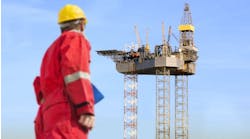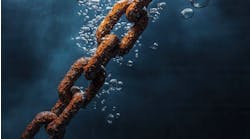Reservoir analysis during underbalanced drilling yields production, reserves increases
Kent Ostroot
Ron Hyden
Halliburton
The ability to analyze reservoir charac-teristics during under-balanced opera-tions increases the opportunities to minimize reservoir damage, determine reservoir potential, and maximize production. Planning, data-gathering capabili- ties, and a complete understanding of underbalanced drilling dynamics are critical to success.
Several record-setting projects in the past 18 months have resulted in lowered costs and increased production, while new technologies have shed light on the value of pressure control in the pay interval, particularly on wells with prolific production potential.
null
To be assured of true underbalanced drilling throughout the pay intervals, it is essential to use fit-for-purpose equipment, data acquisition, data management, and wellbore and reservoir modeling simulators to provide analysis and control of the activity downhole at the pay interval. Figure 1 reflects a composite of field cases depicted by the reservoir analysis from this kind of capability. As pay is intersected in an underbalanced environment, the service produces a quantified reservoir characterization. As sometimes happens, an unplanned pressure event throws the system into overbalance, even for a relatively short period of time. After underbalanced conditions are returned, the damage to the reservoir can be determined. In Damage Rate No. 1, the analysis determines a 5-fold reduction in rate. After an effort to "blow out the damage" with greater drawdown pressures, Damage Rate No. 2 reflects 2 1/2-fold reduction. The most significant observation is that for this case the damaged formation never cleans up to original rates over the observed period. When modeled, the information from the result and the resulting loss of productivity is quantified, value giving the operator an evaluation of the production lost because of overbalance. Typically, the loss of production over the life of the well exceeds the cost of the analysis.
null
The reservoir difference
Understanding the reservoir in this environment constitutes "testing while drilling" ability. The process begins with preliminary analysis of offset well data and design of testing procedures to maximize the reservoir information to be obtained during the drilling process. The Insite system of data acquisition and data management brings the data to one platform from all data sources, after which a reservoir model allows analysis of pressure and rate data to determine reservoir productivity. One of the components of this reservoir model, TimeSplice, transposes and corrects the surface rate data to the bottom hole, taking into account the injection and production lag times. The analytical transient reservoir model uses the bottom-hole pressure corresponding to each traversed layer, in conjunction with other input data, to calculate the rate from each productive zone. The numerical reservoir simulator component can be used to characterize the reservoir more accurately. Reservoir engineers and geologists work together to interpret the results from the predictions and to advise on-site engineers of additional testing requirements or modifications to drilling plans.
This "testing while drilling" methodology yields important reservoir information that in many cases changes the reservoir knowledge in a field. The capability allows well testing to be done during the drilling phase, based on data obtained while drilling, as well as from any testing designed to fit into the underbalanced application. Reservoirs that previously were not sufficiently economic to merit testing are automatically tested during the drilling phase, giving an abundance of reservoir knowledge to the asset manager. The tools amalgamate several advanced techniques and methodologies. In some cases, zones previously not "seen" or not deemed productive with conventional drilling were found to contain reserves economically viable enough to justify completion.
By planning a campaign well in advance, operators can maximize production while ensuring a safe environment. Three times in the past year, teams have experienced sustained production rates of over 40 MMcf/d produced while drilling operations were underway. In five projects where Halliburton teams provided project management and equipment, the operators saw production exceed the conventional overbalanced benchmarks in their respective fields in six out of seven wells. Three of the wells also beat the expected underbalanced dividend, setting record production rates. The one case where failure to beat the overbalanced benchmark occurred was in a near-balanced operation. Near balance does not, by design, achieve underbalanced pressures throughout the pay interval and does not offer the same potential for production success. In several projects, reservoirs were re-evaluated for increased reserves due to higher-than-expected produc-tion rates (up to ten-fold higher) coupled with reduced decline rates.





